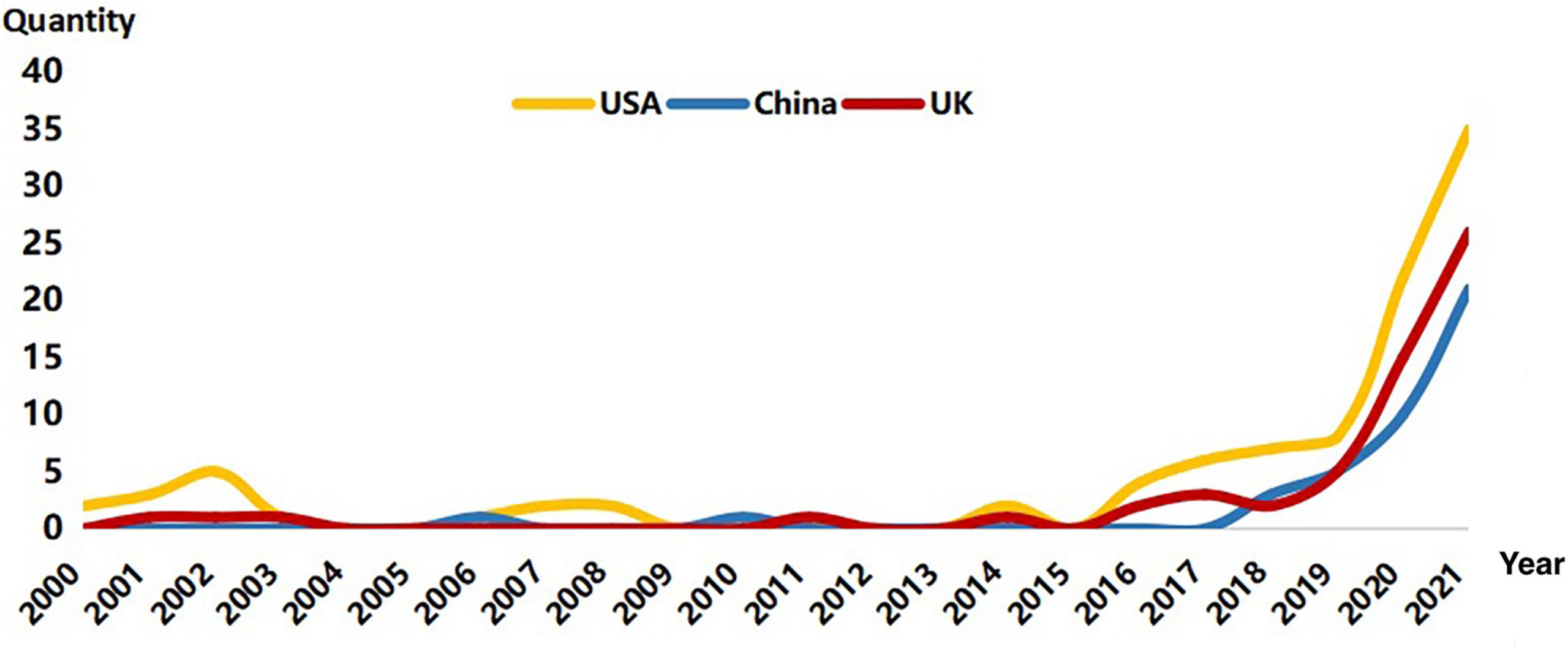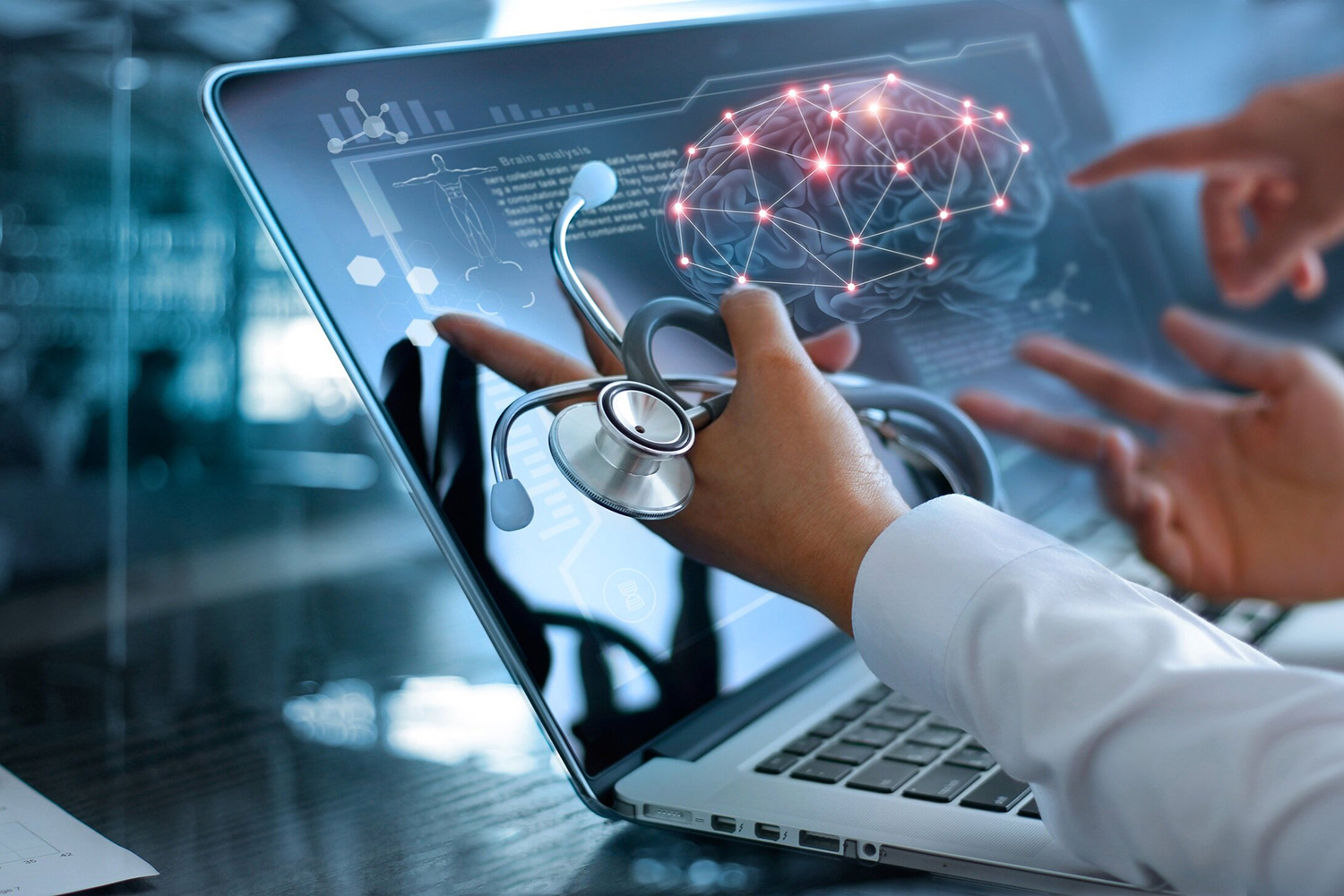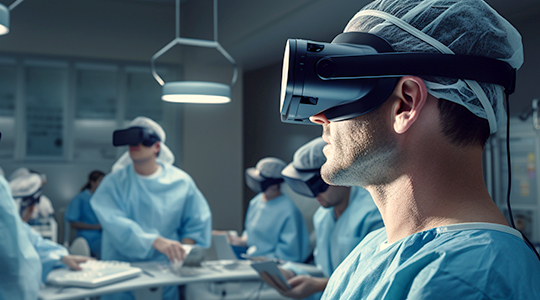We often encounter the term “digital twins” in the manufacturing context or business optimization efforts. Clearly, this technology offers game-changing capabilities that allow enterprises to reinvent their processes and workflows.
However, the digital twins’ impact doesn’t end here. It is a versatile tool that can be applied differently, which generates extra value for numerous industries and niches besides manufacturing. Healthcare is one of the spheres that digital twins can drastically change, and this process has already started.
The application of a digital twin in healthcare varies a lot, from simple cases of process optimization to futuristic solutions yet only tested within laboratory conditions. As a digital twin development company working with the medical industry, we gathered the main info you should know about the digital twin's impact on healthcare and are ready to share it within this article.
What Is the Digital Twin in Healthcare?
A digital twin is more than a simulation, as it powers up the creation of a virtual copy of a physical entity or process that is updated with real-time data. Every digital twin consists of five elements: a physical entity, its virtual counterpart, the connection link between the two, the data that flows between physical and virtual entities, and the services necessary for calibrating and setting up physical and virtual entities.
This model is applicable to all types of digital twins, no matter what difficulty they have or what industry they belong to. A medical digital twin works the same way, the only question is what entity they copy into the virtual dimension. As for now, healthcare digital twins are used to model the next four kinds of entities:
- medical facilities;
- human organs or the whole human body;
- medical devices;
- medicine.
The Evolution of the Digital Twin Technology in Healthcare
The first predecessor of the digital twin technology appeared in the 1960s when NASA used a set of simulations to remotely fix Apollo 13 after its breakage, which allowed astronauts to return home in one piece. However, the concept, as we know it now, was first introduced in 2002, articulating the nature of its model, while the name “digital twin” came into use in 2010.
In the domain of healthcare, the studies of digital twin implementation started in the 00s, while the first clinical application of the technology occurred in 2011. During the last decade, the technologies of modeling, data processing, and analyzing have been rapidly growing, subsequently triggering the development and trial of various digital twins in the medical field. At the same time, the medical digitalization tendency and the emergence of precision medicine have only increased the significance and demand for digital twinning in healthcare.

Distributions of DT research in the medical field among the three main countries
Nowadays, more and more medical institutions invest in digital twin research and development, but still, a lot of innovative concepts remain only on paper or within trial environments. The lack of funding, limited clinicians’ computer literacy, and small testing samples make the mass adoption of the technology a more prolonged process than digital twin enthusiasts might want.
However, our research shows positive examples of digital twin implementation, and the focus on the precision medicine approach demonstrates that digital twins are definitely a key element in the future of healthcare.
The Main Advantages of Developing Digital Twins in Healthcare
The value hidden behind the digital twin technology reveals dozens of new opportunities for healthcare professionals and institutions, allowing them to upgrade their approaches and workflows. Here are the main groundbreaking improvements digital twins offer for the healthcare sector.
Personalization of Healthcare Services
The digital twin technology is a core element for enabling personalized medicine, which implies the treatment plan is built with consideration of a unique patient’s genome instead of the usage of a treatment approach created for an average person. In this conception, the digital twin helps to better understand the patient's condition and predict the disease outcomes and treatment effectiveness.
The availability of personalized medicine ensures that patients receive care of better quality and don’t suffer from inequitable treatments on the ground of race or gender. Consequently, it leads to patients being happier and getting a higher level of autonomy.
Optimization and Risk Prediction
The exceptional abilities of digital twins to precisely model different environments and test various scenarios can be applied to the medical field in two main cases. First, through modeling patients’ conditions, organs, or systems of organs, clinicians can predict the effect of treatment solutions or detect risks that can aggravate the health of the patient. Later, this info can be used to prevent diseases from appearing or developing.
Second, digital twins can help with administrative efforts, making a significant contribution to hospital and capacity management, scheduling, etc. Medical staff that has previously relied on simple analysis and traditional approaches now receives a powerful solution that can plan operations more efficiently, optimizing resource usage.
Enhanced Monitoring
Digital twins combined with IoT-powered devices like wearables enable real-time monitoring, allowing healthcare professionals to notice changes in patients’ states immediately. In the case of patients with severe conditions, it means that clinicians can react instantly and apply more effective treatment, increasing the survival rates.
At the same time, enhanced monitoring also applies to operating theaters. There, with the help of digital twins of equipment and patients’ organs, surgeons can see the visualization of their actions within the patients’ bodies. This increases the chances of surgeries’ positive outcomes and better performance of practitioners.
How to Prepare for the Development of Digital Twins in the Healthcare Industry?
The adoption of a digital twin is a turning point for any medical institution. Yet, a successful implementation demands severe preparation and the involvement of technical professionals from a healthcare software development company with expertise in digital twinning in healthcare.
If you choose to cooperate with experts, most probably, they will provide you with the necessary guidance and help you access the tech advancements you will need to make digital twins work for you. At the same time, you need to prepare internally for upcoming changes, adjusting your internal policies and workflows to the requirements of digital twins.
First, you need to define the outcomes you want to achieve. As you can see, the possible applications of digital twins are versatile and cover different aspects of medical institution operations. Considering the complexity of the technology and its long development cycle, it makes sense to focus on one application case initially.
The second step would be an audit of your company’s digital maturity. Most certainly, you experience some gaps like low employee computer literacy or legacy software pieces, the role of which is essential for digital twin operations. Therefore, you need to take action to resolve these challenges and prepare a groundwork before developing your health digital twin.
Third, you need to take care of your data. Data is the backbone of every digital twin, and its quality will determine if your digital twin is going to perform adequately and provide you with reliable outcomes. Hence, implement data governance policies that will correlate with the needs of the digital twin in question and pay extra attention to proper collection, management, and analysis of data.

How to Design a Digital Twin in Healthcare?
A digital twin for healthcare can be created with the help of different technologies, like the Internet of Things, 3D modeling, integrated mathematical algorithms, or augmented/virtual reality. The selection of the tech stack and visualization tools depends on your needs and desired outcomes. Still, the development process will strategically remain the same and, according to our experience, include the next stages.
Entity Investigation: this is a preliminary stage when the physical entity is studied, and its essential qualities are mapped together with the processes the entity is taking part in.
Digital Copy Modeling: during this step, engineers leverage mathematical analysis and other techniques to prepare a comprehensive model that will become a copy of a physical entity.
Model Realization: mathematical model, data, and visualization come together and, through the efforts of developers, turn into a dynamic system we know as a digital twin.
Testing: as with any other solution, a digital twin is tested to see if it performs adequately under different conditions and situations.
Launch: on this step, a digital twin is implemented into the workflow and starts to perform their tasks.
Corrections: after launch, a technical team monitors the performance of a digital twin and makes corrections in its setup to achieve higher productivity and effectiveness.
Top Tips to Improve the Accuracy of Healthcare Digital Twins
Digital twins deliver the most value when they are able to represent real-life conditions accurately. Hence, ensuring the accuracy of the data is the main priority for enterprises that start to adopt digital twins, and there are two main activities that will help to achieve such a result.
First, it is thorough data management, the importance of which we have already mentioned. The digital twin is as accurate as the data it uses, so it is only logical that the increase in data quality will lead to more precise outcomes. Therefore, the extra investment into data cleansing, the implementation of error-correcting software, and the focus on crucial data pieces instead of the whole data volume would be the right strategy.
Second, you also need to calibrate your digital twin to guarantee its maximal efficiency. By setting up a data feedback loop, when a digital twin generates insights that are later implemented to improve the operations of its real-life counterpart, you can constantly check and adjust your digital twin settings to improve its performance. Such calibration will ensure that two entities — virtual and physical — are working in sync.
Digital Twin Healthcare Use Cases

Digital twin applications in healthcare notably expand the capabilities of medical staff to offer services of higher quality and ensure higher survival rates, as well as implement precision medicine practices and successfully prevent certain health risks from developing into severe diseases.
As we have already mentioned in this article, some of the cases have not yet been implemented in clinical practice, but they show promise to deliver real value. Therefore, we decided to add them to this list.
1. Healthcare Facility Digital Twin
Digital twins give an opportunity to model any medical facility and simulate its operations under different circumstances. As a dynamic system with numerous agents operating within it, hospitals demand a lot of careful planning and adequate management to operate at their maximum capacity. The digital twin technology becomes a tool that is able to help hospital staff to detect the most effective strategies to organize operations.
By leveraging historical and real-time data, hospitals can evaluate how wisely they use the available resources like staff and beds and optimize them in order to increase the efficiency of the facility.
Simulations can also help to develop operating strategies that should be implemented in critical situations, like epidemics or an unusually huge inflow of patients after some disaster or accident. In this case, the biggest benefit of a digital twin is its ability to run scenarios independently of real-life objects, which means that no disruptions will occur while staff tests different hypotheses.
Digital twins can also be used for surgical purposes. First, they can help surgeons to prepare for upcoming surgeries and plan their course of action beforehand. Second, this technology can contribute a lot during actual surgeries by providing visualizations of patients’ bodies or equipment. At the same time, digital twins combined with the metaverse allow for the remote involvement of clinicians, which increases the chances of top specialists aiding in difficult cases.
2. Human Body Digital Twin
Through the advancements in IoT-powered wearables and medical imaging, clinicians and engineers can create digital twins of various parts of the human body, from single cells to whole organs or their systems.
As of now, there are cases of digital twins being developed to monitor and treat the heart, brain, airway system, brain aneurysm and its surrounding blood vessels, diabetes, and multiple sclerosis, predict viral infections and immune response or assist in trauma management. Such digital twins and similar to them help clinicians to get precise insights regarding persons’ conditions and allows doctors to assign personal treatment plans instead of following the more generalized approach.
At the same time, some researchers work on digital twins that simulate the personal traits of an organism like RNA to determine what effect a specific medicine has on a body. However, the available studies apply the technology to animals, yet there are no cases of such application for humans.
3. Medicine and Device Digital Twin
Digital twins are used in manufacturing to enhance the design and development processes of products. Drugs, medical devices, and equipment are no exception. Medical manufacturers leverage digital twins to test the performance of their products before releasing them to the world.
This allows for efficient alteration of materials and designs used for device, equipment, or medicine creation, as well as enhanced quality assurance that guarantees the safety and high performance of the final product.
Let's discuss your project.
Develop Your Custom Digital Twin with Program-Ace
A digital twin in medicine is definitely the future that will drastically transform the healthcare landscape. Digital twins promise a more effective and personalized approach to patients’ treatment. Therefore, the further development of the technology becomes a priority for HealthTech and the healthcare sector overall.
However, you don’t need to wait any longer to initiate the process of digital twin adoption for your medical institution. Program-Ace, a custom software development company with significant experience in the healthcare industry, knows how to build an effective medical digital twin. Feel free to contact us, and we will help you enter the world of digital twinning.













